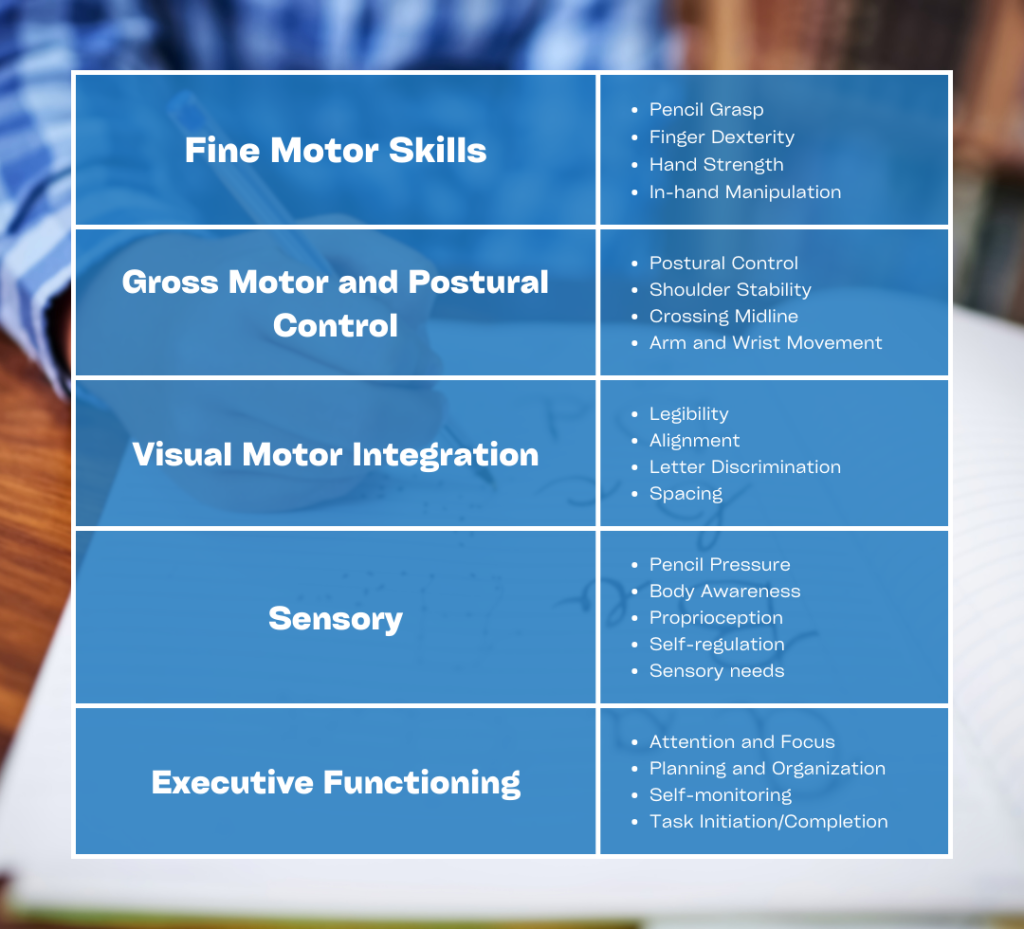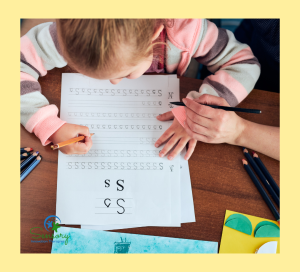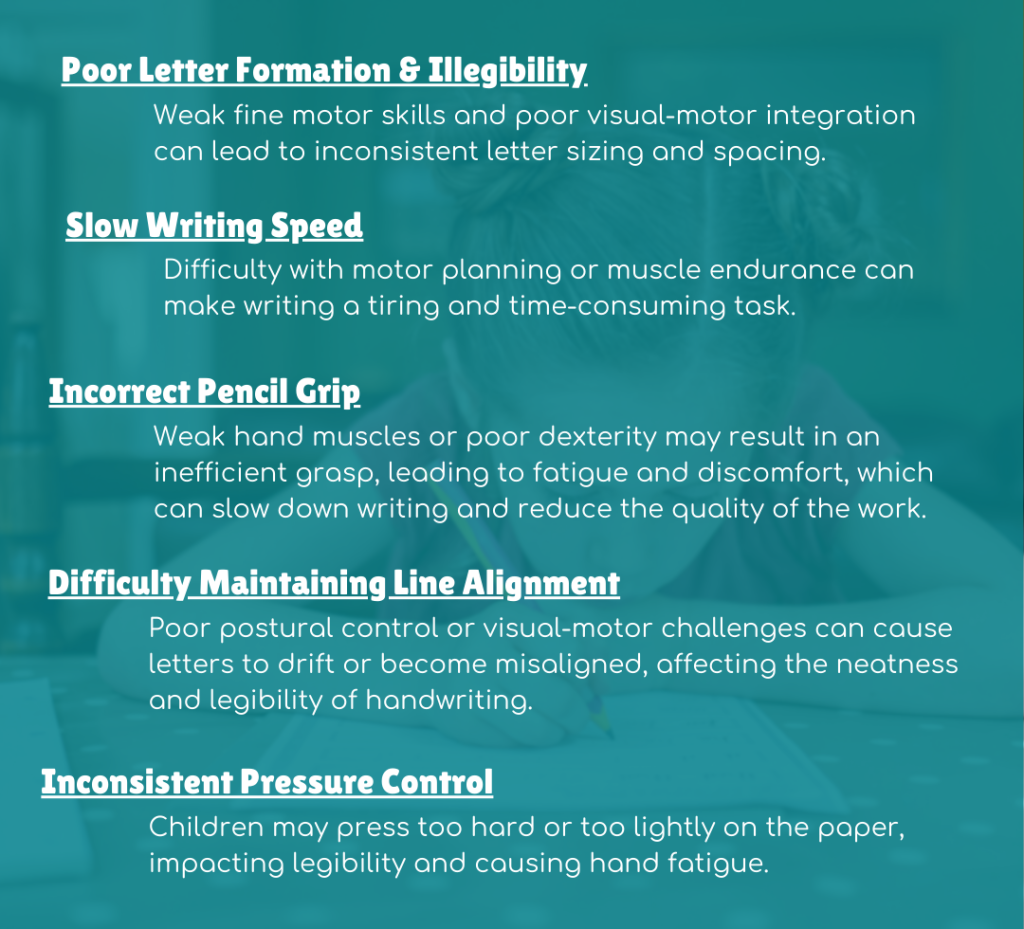However, many kids struggle with handwriting due to underlying challenges in motor control, coordination, or sensory processing.
In this blog, we will take a closer look at handwriting by identifying the skills needed, understanding what can make writing difficult, and discuss strategies that can help improve handwriting.
Handwriting is a complex task that involves multiple skill areas working together. These skills are essential for developing efficient and functional handwriting.

These skill components can be categorized to motor, sensory, visual perceptual, and executive functioning.
The ability to control small hand and finger movements for precise letter formation.

Strong core and shoulder stability support proper hand positioning and endurance for writing.

Coordinating what the eyes see with hand movements to form letters accurately.



While learning handwriting, children may face several common challenges that can impact their ability to write efficiently.

Some of the frequent handwriting problems include:

These difficulties can also lead to challenges, such as:
Handwriting can be tricky for many kids, but small changes can make a big difference! Occupational Therapists use a variety of strategies to help children develop strong and efficient handwriting skills.
Here are some fun and easy ways to help a child build the skills they need for writing success:

Stronger hands and fingers help with better pencil control! Try:

A good grip makes writing easier and less tiring! Try:

Handwriting requires the eyes and hands to work together!
Help your child with:

Some kids need extra sensory input to control their pencil pressure. Try:

A strong core helps with sitting still and writing comfortably.
Help your child by:

Kids learn best through play! Keep handwriting exciting with:
Improving handwriting takes time, practice, and a targeted approach that addresses the child’s specific needs. By focusing on foundational skills and using fun, engaging strategies, occupational therapists help children develop the confidence and ability to write with ease. If your child is struggling with handwriting, an OT assessment can help identify underlying challenges and create a personalized plan for success.
Looking for more Tips and Strategies?
Contact us to learn how Occupational Therapy can support your child’s handwriting development!